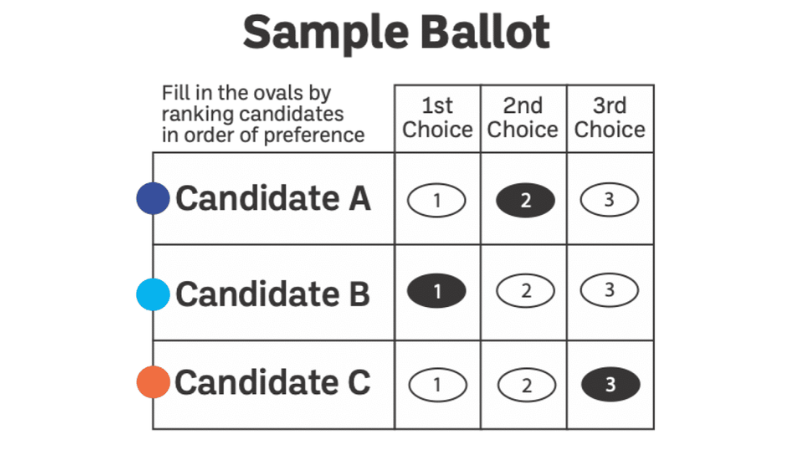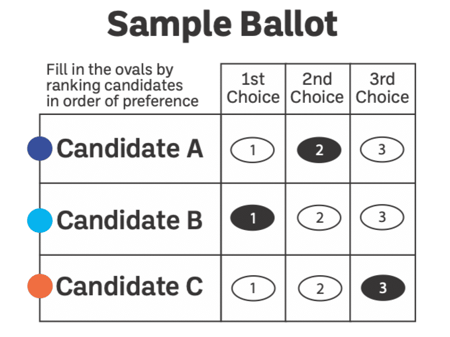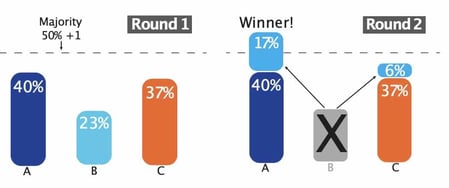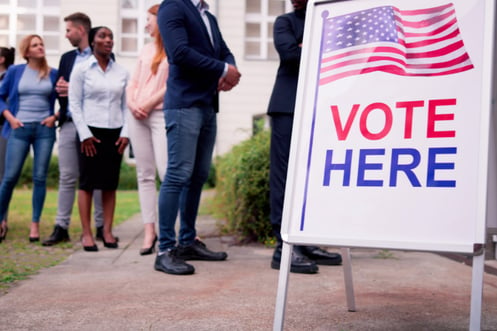Everything you need to vote, and help others do the same
Election Day is officially one month away, so it’s time to make a voting plan. In theory, voting should be a simple and easy process. Register,...

Municipal elections are coming up on November 4, and if you live in the Twin Cities, there is a good chance you will be using ranked choice voting (RCV) to fill out your ballot, which has been growing in popularity in Minnesota and across the country.
Currently, there are five Minnesota cities that use this system of voting: Minneapolis, St. Paul, Minnetonka, Bloomington, and St. Louis Park. While it’s been used in municipal elections since the late 2000s, there is still some confusion about how ranked choice voting works. That’s why your Twin Cities Habitat Government Affairs team is here to make it easy and explain the benefits of this popular voting system.
Traditional voting makes you choose just one candidate for each office. With ranked choice voting, you’re allowed to pick a first choice, second choice, and third choice (some ballots allow even more choices). Your ballot will typically have a column for your first, second, and third choices. View the following example of a ranked choice voting ballot from FairVote Minnesota:


When the ballots are counted, RCV works like an instant runoff election. All first-choice votes are counted first. If one candidate has a majority of the first-choice votes, they win. If there is no majority for a single candidate, then the candidate with the fewest first-choice votes is eliminated. Voters who had chosen the eliminated candidate as their first choice will then have their second-choice votes counted. This continues until there is one winner with a majority of the votes. Check out this video from MPR for a fun demonstration of RCV in action.
Ranked choice voting has been successful in Minnesota. It has produced higher turnouts, greater voter engagement, and outcomes that better represent the community.
First, RCV has given voters a wider range of choices in who can represent them and their communities. This is especially true when it comes to competitive elections. Through this system, voters can choose the candidates who best match their values and priorities, even if they seem like a long shot to win. If a voter's favorite candidate is eliminated, their vote will go to the voter's second-favorite candidate, so voters do not have to worry about "wasting" or splitting their vote.
Because this gets rid of the "spoiler effect" and the need for summer primaries with low turnout, RCV also increases representation and inclusion in the voting process. It opens up opportunities for candidates to run who are from more diverse backgrounds or third parties, and those who may otherwise face funding challenges to run. As a result, women and people of color are more likely to run and win in ranked choice elections.

Additionally, RCV elections have brought in more emphasis on voter engagement and positive campaigning. They require candidates to reach out to as many voters as possible to try to get ranked, and appeal to a broader base. With traditional voting, candidates might think “that group will probably not vote for me, so I won’t bother reaching out." With RCV, candidates think “that group will probably not rank me first, but they might make me their second or third choice, so I'd better reach out."
This not only improves outreach and engagement to and within communities, but also encourages positive and civil campaigning. In RCV races, candidates benefit more from talking about the issues that matter most to them than from boosting negative attacks on their opponents. This helps reduce polarization, divisiveness, and political gridlock both during campaign season and after candidates are elected into office.
Ranked Choice Voting allows you to have more flexibility and choice in your vote, and is being taken up by many cities for its ability to strengthen democracy. It differs from the current system because you are able to provide your opinion on more than just your first choice. Because candidates need a great number of votes to win, they more accurately reflect the wishes of the community. Since the system's implementation, there has been more diversity within the election process. It has granted voters more say in who they would choose as their elected officials.
Learn more about ranked choice voting, including additional Frequently Asked Questions, in this MPR article: Ranked Choice Voting Explained.
Twins Cities Habitat for Humanity encourages all of its supporters to take part in the election process. If you live in one of the cities that uses ranked choice voting, learn how it works in your city:
Visit our Elections Resource Center to help create your voting plan, check your registration status, research candidates, and more.
Your gift unlocks bright futures! Donate now to create, preserve, and promote affordable homeownership in the Twin Cities.

Election Day is officially one month away, so it’s time to make a voting plan. In theory, voting should be a simple and easy process. Register,...

There are many ways to help advance affordable homeownership. If you are familiar with our work at Twin Cities Habitat for Humanity, you probably...

We continue to process the pain and hope of our nation’s uprising for racial justice amid a global health crisis. You can see ourrecent statements...